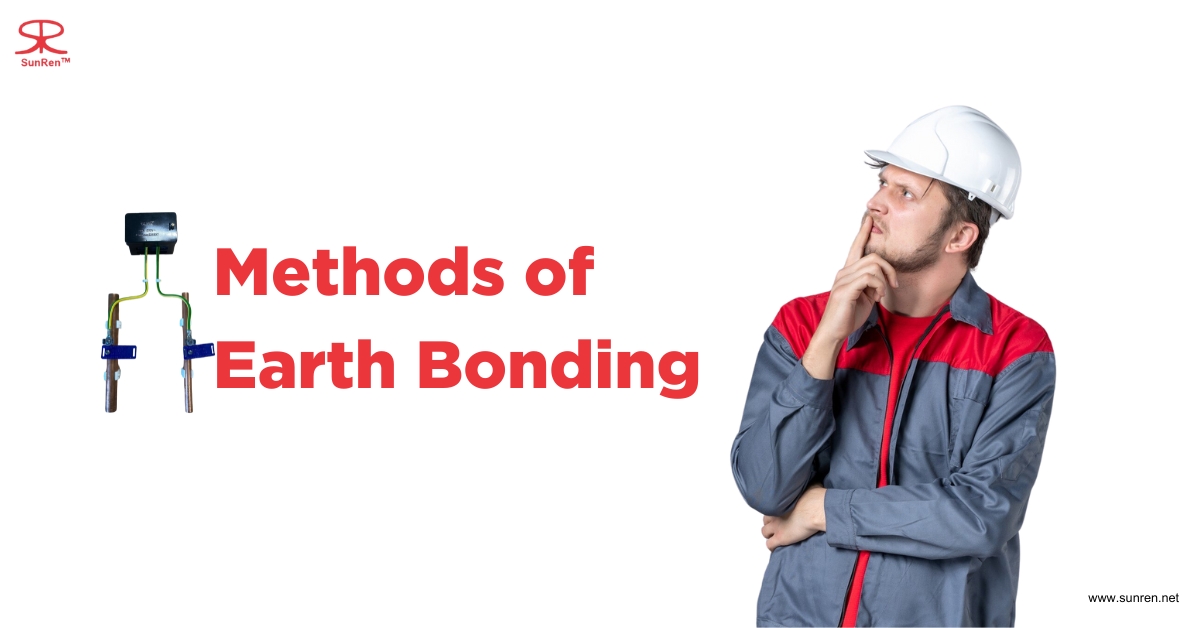Earth bonding is a crucial safety measure in electrical installations that prevents electrical shocks and reduces the risk of fire hazards. The safety practice of earth bonding forms the foundation of electrical safety by establishing shock protection and fire hazard protection.
The process connects metallic electrical components to an earth ground so excess electrical currents safely drain off. The practices of earthing and bonding serve essential safety and regulatory compliance requirements in all buildings, from domestic residences to commercial enterprises and manufacturing plants.
Importance of Proper Earth Bonding

The potential danger of electrical installations grows when grounding steps are not followed correctly. The key function of Earth bonding safeguards against severe dangers that might arise from electrical faults.
Proper earth bonding techniques become necessary whenever conductive materials, whether metal pipes or frameworks, exist in the same environment. The installation of correct earthing systems protects lives alongside property assets by preventing excessive electrical currents, which would endanger safety.
The upcoming text discusses the principles of earth bonding together with its main objectives, along with multiple implementation strategies and major advantages.
The content includes descriptions of the commonly utilized materials, such as copper bonded earth rods along with copper bonded earthing electrodes, and provides answers to common questions about house earth bonding requirements and earth bonding inspection methods.
Purpose of Earth Bonding

Both earthing and electrical Bonding share the same purpose, and that is to provide a path with low resistance for electrical faults, protecting both people and property. The main goals are:
- Preventing Electric Shock: Earth bonding precludes exposed metal parts from becoming dangerous if something goes amiss. If a live wire contacts a metal surface, proper bonding will safely direct the electrical current into the ground instead of through a person.
- Reducing Fire Risks: If proper earthing work is done, the chances of overheating are very less, thus minimizing the risk of fire. Unbonded metal components can heat up in the event of electrical surges and faults, posing fire risks owing to excessive heat buildup.
- Maintaining Voltage Stability: The prevention of voltage instability depends on ground and bond implementations to protect electrical equipment from harmful voltage events.
- Ensuring Compliance with Safety Standards: To prevent hazardous conditions, regulations state that earth bonding clamps must be used with proper connections. The official governing bodies, such as the IET Wiring Regulations (BS 7671), stipulate that all electrical systems are bonded appropriately.
- Protecting Appliances and Electrical Equipment: Proper earthing and bonding protect electrical appliances from damage caused due to a power surge. Sensitive electronics can malfunction or even be permanently damaged with unbonded electrical systems.
- Minimizing Electromagnetic Interference (EMI): EMI, which can disrupt communication systems, sensitive electronics, and data transmission, is minimized by electrical bonding.
- Preventing Arcing and Sparks: In a compound where explosive materials exist — chemical plants, for example — establishing an earth bond will stop static from accumulating, drastically decreasing the potential for accidental sparks that eventually lead to an explosion.
Methods of Earth Bonding

Different methods are used for earth bonding to ensure electrical safety. Some of the most common techniques include:
1. Main Protective Bonding (Main Equipotential Bonding)
This method connects incoming metal services like water, gas, and oil pipes to the earth bonding system, ensuring they remain at the same electrical potential.
- What size of earth cable is needed for bonding water pipes?
- Typically, a 10mm² earth cable is used for water and gas bonding in domestic installations.
- For industrial applications, larger cables may be required depending on the system voltage and grounding requirements.
2. Supplementary Bonding
To prevent electric shock, this method bonds conductive bathroom contents as well as metalwork exposed to moisture levels because pipes and radiators need protecting.
- Modern homes require no supplementary bonding with the installation of RCD (Residual Current Device) protection.
3. Copper Bonded Earth Rods and Electrodes
To create a quick and reliable earth fault current path, the application of a copper-bonded earth rod or copper-bonded earthing electrode in ground soil is necessary.
- Copper bonded earth rods are preferred due to:
- High corrosion resistance
- Better conductivity compared to galvanized rods
- Long-lasting performance in various soil conditions
- Superior grounding efficiency in areas with high electrical conductivity
4. Earth Bonding Clamps
Earth bonding clamps securely attach bonding conductors to pipes or metal structures, ensuring a reliable connection. The proper installation of these clamps ensures long-term stability and safety.
5. Checking Earth Bonding
- How to check earth bonding?
- Visual Inspection: Ensuring all connections are secure and unbroken.
- Multimeter Testing: Measuring resistance to verify a continuous earth connection.
- Professional Inspection: Qualified electricians use specialized tools to confirm compliance with standards.
Benefits of Earth Bonding

System efficiency, along with electrical safety depends on the implementation of earth bonding with several important advantages:
- Enhanced Electrical Safety – Reduces the risk of electric shocks and fire hazards.
- Compliance with Regulations – Ensures adherence to electrical safety standards.
- Protection Against Electrical Faults – Prevents damage to appliances and circuits.
- Long-Term Durability – Copper-bonded earth electrodes maintain reliable protection functions for an extended duration.
- Minimized Maintenance Costs – The use of bonded earth electrodes minimizes both breakdown occurrences along related expensive maintenance costs.
- Protection Against Environmental Factors – Ensures safety in areas prone to moisture or corrosion.
- Improved Performance of Electrical Systems – Electrical systems function better with this approach because the method decreases electromagnetic interference and boosts power quality.
- Reliability in Harsh Conditions – The correct method of bonding creates reliable operation during extreme weather events where lightning strikes together with intense storms.
Frequently Asked Questions (FAQ)
What is the earth bonding process?
Earth bonding is a process where electrical faults current flows back to the ground, which ensures safety by preventing electric shock.
Is earth bonding still required?
Yes, earth bonding is still required to maintain safety by preventing shocks. Some guidelines should be followed, like BS 7671 (IEE Wiring Regulations) and IEEE 80.
Where can people have earth bonding services provided?
There are a few companies that provide this service, and the most popular one is Sunren Technical Solutions Private Limited.
Conclusion
Earth bonding presents an essential safety practice for electrical systems because it enables the safe direction of surplus electrical currents into the ground.
The prevention of electrical hazards depends heavily on three essential earth connection methods, which include copper-bonded earth rods together with earthing work and earth bonding clamps. House safety, together with compliance to regulations, depends on correct identification of grounded items and proper inspection techniques for earth bonding.
Correct grounding and interconnection of electrical systems and appliances both boost security measures and increase the operational lifespan of power systems. The correct and scheduled inspection of earth bonding by both businesses and homeowners protects against potential electrical hazards.



